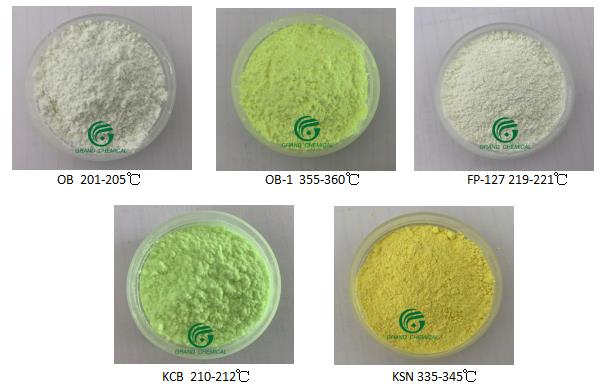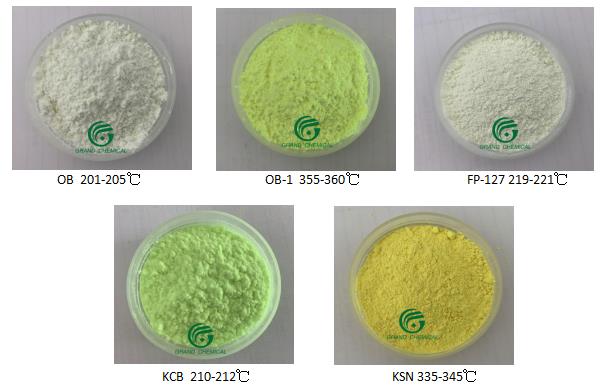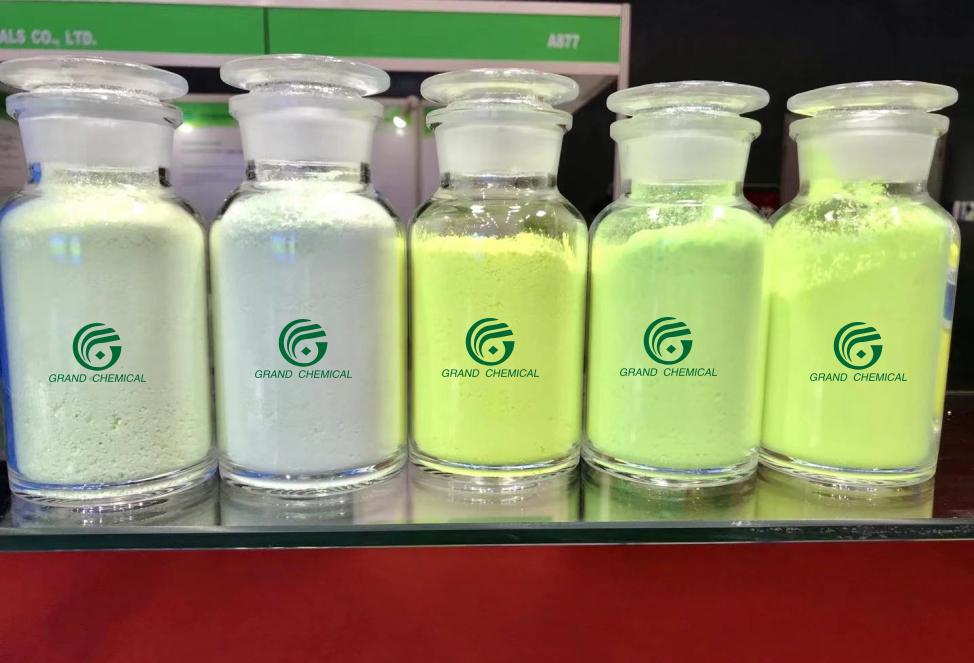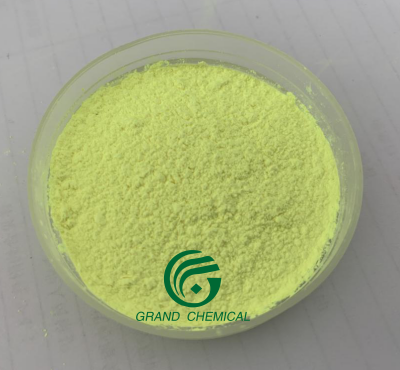There are many varieties of optical brighteners in the market, and the optical brighteners for polymers are powders that are easily dispersed in these raw materials. During the production, they can either be added directly to the monomer (before or during the polymerization reaction), or they can be added before the molding (e.g., injection molding or spinning) process (after the polymerization reaction). There are so many different optical brighteners. Do you know how to choose suitable optical brighteners for your plastics? Here below are 6 basic performances.
(1) Processing temperature resistance
Some polymers (such as polystyrene, ABS, polycarbonate, etc.) have processing temperatures as high as 300°C. Therefore, the optical brighteners used for processing these substrates must be able to withstand temperatures of 300°C or higher. Here below are the main optical brighteners for polymers and their melting point.

(2) Sunlight and climate resistance performance
Many plastic products or synthetic fiber products are commonly used on outdoor occasions. In order to maintain the brilliant color of these products, the optical brighteners for these polymers must have good performance in sunlight and climate resistance.
(3) Migration properties
Many optical brighteners will be partially dissolved in the polymer at the polymer’s processing temperature. At this time, the optical brightener is prone to migrate in these substrates. Therefore, it is required that the optical brightener used will not migrate to the surface of the substrate or penetrate into other material layers under appropriate formulation conditions.
(4) Good compatibility with other additives.
When polymers are processed, many additives are inevitably added, such as titanium dioxide, plasticizers, pigments, fillers, etc.
Among them, titanium dioxide also has strong absorption in the UV absorption region of the optical brightener, so this will interfere with the light absorption of the optical brighteners and eventually reduce the whiteness effect. Therefore, When the two must be used at the same time, we should consider the matching of their absorption behaviors. Besides, Other additives, such as hindered amine light stabilizers, will also affect the whiteness of optical brighteners.
(5) High purity
High purity means a high fluorescent whitening rate. Sometimes, even a small amount of impurity will reduce the fluorescence efficiency of the optical brightener.
(6) Non-toxic and environmentally friendly
Plastic products are often in direct contact with food or human skin, the optical brightener used in such products must be non-toxic and meet certain health standards, such as the U.S. FDA, Japan’s MITI, and the European Union’s health regulations. In addition, it is also very important to be environmentally friendly during use and even at the time of disposal.
If you would like to know the most commonly used optical brighteners for polymers, please check:
The mainly optical brighteners for polymers
The optical brighteners offered by Shandong Grand Chemical Co., Ltd. have met the U.S. FDA regulations and REACH registration. The quality has passed the Rohs test and SVHC screening by SGS.
It is environmentally friendly and safe for food packing materials under the instructed dosage.
Should you have any inquiries about optical brighteners for polymers, please do not hesitate to contact us via: sales@obachemical.com; or WhatsApp: +86 13173009832.



